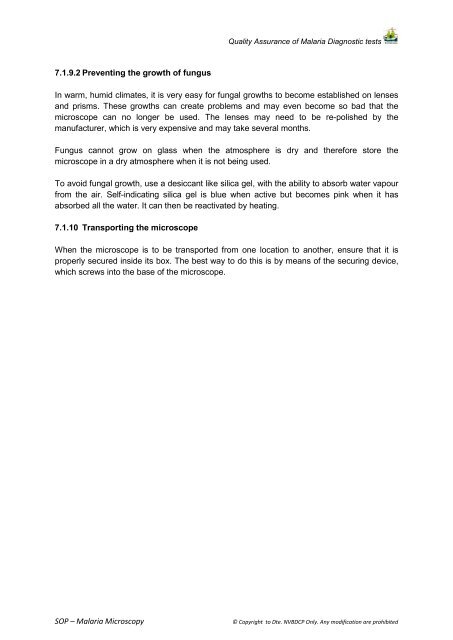SOP â Malaria Microscopy - NVBDCP
SOP â Malaria Microscopy - NVBDCP
SOP â Malaria Microscopy - NVBDCP
Create successful ePaper yourself
Turn your PDF publications into a flip-book with our unique Google optimized e-Paper software.
Quality Assurance of <strong>Malaria</strong> Diagnostic tests7.1.9.2 Preventing the growth of fungusIn warm, humid climates, it is very easy for fungal growths to become established on lensesand prisms. These growths can create problems and may even become so bad that themicroscope can no longer be used. The lenses may need to be re-polished by themanufacturer, which is very expensive and may take several months.Fungus cannot grow on glass when the atmosphere is dry and therefore store themicroscope in a dry atmosphere when it is not being used.To avoid fungal growth, use a desiccant like silica gel, with the ability to absorb water vapourfrom the air. Self-indicating silica gel is blue when active but becomes pink when it hasabsorbed all the water. It can then be reactivated by heating.7.1.10 Transporting the microscopeWhen the microscope is to be transported from one location to another, ensure that it isproperly secured inside its box. The best way to do this is by means of the securing device,which screws into the base of the microscope.<strong>SOP</strong> – <strong>Malaria</strong> <strong>Microscopy</strong>© Copyright to Dte. <strong>NVBDCP</strong> Only. Any modification are prohibited
















